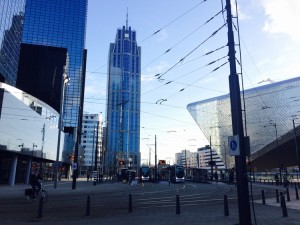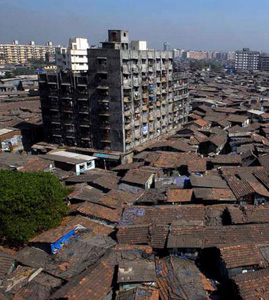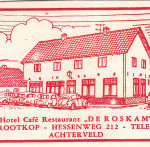Lasse Wamsler, Sune Gudmundsson & Sven Johannesen ~ Drowning Megacities ~ Aljazeera
 The world is getting warmer, the rain is growing heavier and the oceans are rising. At the same time, the world’s rural inhabitants are migrating to its cities on a massive scale.
The world is getting warmer, the rain is growing heavier and the oceans are rising. At the same time, the world’s rural inhabitants are migrating to its cities on a massive scale.
Sub-Saharan Africa is the part of the world most affected by the dual pressure of climate change and the rapid, uncontrolled transformation of its cities into megacities.
The extreme speed and scale of urbanisation has swallowed up many former peasants, incorporating them into the vast slums of sprawling megacities.
In these unplanned, hostile urban environments, where infrastructure is at a minimum, they are exposed to the dangers posed by rising seas and heavy rains – forces that wreak havoc and cause deaths every year.
But, from Lagos in the west to Dar es Salaam in the east, slum-dwellers, the middle class, and the elite alike are fighting back against the waters.
This is a visit to the front line of their battle: to Africa’s drowning megacities.
Go to: http://interactive.aljazeera.com/drowning_megacities/
Sean Coughlan ~ Are Cities The New Countries?
Do big cities have more in common with each other than with the rest of their own countries?
Are there meaningful comparisons between cities such as New York, London and Shanghai, rather than between nation states?
That is the suggestion of the Organisation for Economic Co-operation and Development (OECD).
Such mega-conurbations have bigger populations and economies than many individual countries – and the think tank argues that they face many similar challenges, whether it is in transport, housing, security, jobs, migration or education.
In a report on global trends shaping education, the OECD says cities could learn from each other’s experiences, in a way that would be impossible at the level of national politics.
Read more: http://www.bbc.com/news/education
10 Questions For Rotterdam ~ From Cape Town / A Capetonian
Ten months have passed since that Sunday afternoon in Autumn when my train pulled into the station and I set foot on Platform No. 9. I remember making my way through the station building with a heavy heart, and an even heavier suitcase, overwhelmed by the newness and all the uncertainties ahead. However, as soon as I stepped out onto your brand new stationsplein and took in my surroundings, my heavy luggage seemed featherweight and my misgivings vanished. For a moment I was blinded by the sunlight glinting off a corner of your silver roof, but the drift of a cloud moved over and your skyline greeted me on all sides.
The emotions rising and bubbling in my mind then quickly gave way to questions about you, which I have been refining and adding to ever since – prompted by your cityscape, your culture and your people. Can you help me – a passionate urbanist from Cape Town – gain some answers?
Read more: http://www.studiorotterdam.co.za/-questions-for-rotterdam
Ndanki Kahiurika & Yochanaan Coetzee ~ Namibia: Informal Settlements Sink In Poor Sanitation
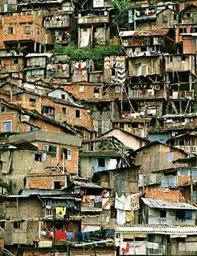 It is common to see small children defecating next to dump sites among shacks early mornings in any of the densely populated settlements in Zambezi region.
It is common to see small children defecating next to dump sites among shacks early mornings in any of the densely populated settlements in Zambezi region.
This is so because most often the makeshift toilets are overflowing while the bush is not within walking distance.
This is what people in other informal settlements across the country such as Goreangab Dam, Okahandja Park and Havana in Windhoek are experiencing.
Hendrina Immanuel (23) said it is unfortunate for a girl to be forced to use makeshift toilets or be forced to use the bushes.
Another 25-year-old, Lydia Hausiku who lives with a family of eight said: “Because the bush is so far away, we often use chamber pots and buckets. There is no other way. Once the buckets and the pots are full, we walk to the bushes to dump the waste.”
Others like Martin Samuel use ‘flying toilets’ – plastic bags used for open defecation and then flung onto dump sites and riverbeds.
Read more: http://allafrica.com/
Valeria Luiselli ~ Trespassers On The Rooftops: A Secret History Of Mexico City’s Cultural Revolutionaries
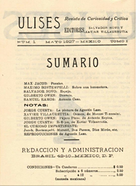 Mexico City rooftops – azoteas – are usually flat. A parapet wall encloses the roof area, creating a kind of open-air patio, less visible to neighbours than the common interior patios of colonial and neocolonial buildings, and not easily accessed by visitors.
Mexico City rooftops – azoteas – are usually flat. A parapet wall encloses the roof area, creating a kind of open-air patio, less visible to neighbours than the common interior patios of colonial and neocolonial buildings, and not easily accessed by visitors.
The rapidly expanding city of the 1920s housed its working classes either in these small rooftop rooms (cuartos de azotea), or in the more well-known vecindades, Mexico’s version of tenement buildings. Brought to Mexico during the conquest in the 16th century, but transformed into the sort of living quarters we know today during the mid-19th century, the vecindades were the typical dwelling space for working-class families, and in them the urban lumpen were crammed into small rooms that surrounded a common patio. While these were occupied by members of the working classes whose jobs did not provide room and board, such as factory workers, builders, or street-vendors, the cuartos de azotea were occupied by maids and servants, usually migrants from the provinces, who worked for the family that lived downstairs.
Read more: http://www.theguardian.com/trespassers-on-the-rooftops
Babar Mumtaz ~ How To Make Housing Affordable For The Urban Poor
Cheaper or new building materials don’t go far enough to tackle the housing problem in cities, says Babar Mumtaz.
In countries of the global North, urban ‘affordable housing’ means unaffordable housing subsidised by the state (formerly called social or public housing). But this cannot be the answer where public funds are scarce and are often misused.
So in the South, ‘affordable housing’ has to be what people and society can pay for — but it also has to be housing that is adequate and acceptable.
The question is, why does inadequate housing persist? One reason, of course, is peoples’ low incomes.
In many developing countries, even though over 80 per cent of homes are owner-occupied, low incomes mean that the houses are inadequate — as evidenced by the slums and squatter settlements that have come to define cities in the South.
So the obvious but radical answer could be to pay people a decent wage. Another answer is to revisit the terms and conditions of conventional housing finance: getting a mortgage is off limits for those without high or proven incomes who either cannot borrow, or cannot borrow enough, to buy the cheapest house on the market.
Microfinance can help with repairs or extensions, but has limited application to housing purchase. A non-conventional model for greater reach and impact might, for example, incorporate short-term, sequential loans for incremental construction, paid off with variable amounts (for example, via mobile phones) using a network of community-based retail agents.
But finance aside, what can be done, and why is it not being done?
Read more: http://m.scidev.net/housing-affordable-urban-poor.html

